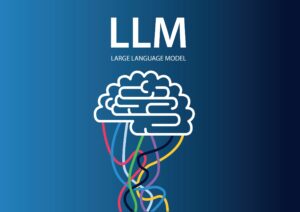

(Tee11/Shutterstock)
Companies that are running into performance walls as they scale up their vector databases may want to check out the latest update to Zilliz Cloud, a hosted version of the Milvus database from Zilliz. The database maker says the update brings a 10x boost in throughput and latency, three new search algorithms that improve search accuracy from 70% to 95%, and a new AutoIndexer that eliminates the need to manually configure the database for peak performance on each data set.
Interest in vector databases is booming at the moment, thanks in large part to the explosion in use of large language models (LLMs) to create human-like interactions, as well as increasing adoption of AI search. By caching relevant documents as vectorized embeddings in a database, a vector database can feed more relevant data into AI models (or return better results in a search), thereby lowering the frequency of hallucinations and creating a better overall customer experience.
Zilliz is among the vector databases riding the GenAI wave. As the commercial outfit behind the open source Milvus database, the Redwood City, California company is actively working to carve out the high-end segment of the vector database market. Zilliz CEO and Founder Charles Xie says the company has more than 10,000 enterprise users, and counts large enterprises like Walmart, Target, Salesforce, Intuit, Fidelity, Nvidia, IBM, PayPal, and Roblox as customers.
With today’s update to Zilliz Cloud, customers will be able to push the size and performance of their vector databases installations even more. According to Xie, customers can use the 10x performance boost to either increase the throughput or to lower the latency.
“A lot of these vector database are running queries at subsecond latency,” Xie tells BigDATAwire. “They’re running somewhere from one second to 500 milliseconds. But in terms of latency, a lot of customers may expect more real-time latency. They want the query to be running in milliseconds, basically in tens of milliseconds. They want to get the results in 10 milliseconds or in 20 milliseconds.”
Customers that need more throughput can configure the database to boost throughput. According to Xie, vector databases often deliver to 50 to 100 queries per second. With the update to Zilliz Cloud, the company is able to offer a lot more, Xie says.
“There are a lot of these online services, they want 10,000 queries per second,” he says. “If you get a super popular application, you get hundreds of millions of users, you’d probably like somewhere from 10,000 per second to even 30,000 per second. With our new release, we can support up to 50,000 queries per second.”
The performance boost comes from work Zilliz has done to expand support for parallel processor deployments. It also added support for ARM CPU deployments, to go along with its previous support for Intel and AMD CPUs and Nvidia GPUs. It’s currently working with AWS to support its ARM-based Graviton processors, Xie says.
“We are using the parallel processing instruction set of modern processors, either the ARM CPU or Intel CPU, to unlock the full potential of the parallel data execution,” Xie says.
As companies move GenAI applications from development to production, the size of their vector databases is increasing. A year ago, many vector databases had on the order of a million vector embeddings, Xie says. But at the beginning of 2023, it was becoming more common to see databases storing 100 million to several billion vectors, Xie says. Zilliz’ largest deployment currently supports 100 billion vectors, he says.
Zilliz Cloud customers will be able to get more use out of all that high-dimensional data with the addition of new search algorithms. In previous release, Zilliz Cloud supported dense vector search, including approximate nearest neighbor (ANN). Now it sports four.
“We introduced a sparse index search, or basic sparse embedding search. And we also introduced scalar search, so you can do data filtering on top of a scalar property. And also we have this multi-vector search, so basically you can put a number of vectors in a vector array, to get more context in this search,” Xie explains.
“So combining these four searches–dense vector search, sparse vector search, scalar search, and also multi-vector search–we can bring the accuracy of the search result to another level, from around 70% to 80% accuracy to 95% and above in terms of recall accuracy,” he continues. “That’s huge.”
All those new search types could add a lot more complexity to Zilliz Cloud, further putting the database out of reach of organizations that can’t afford an army of adminstrators. But thanks to the new AutoIndexer added with this release, customers don’t have to worry about getting 500 to 1,000 parameters just right to get optimal performance, because the product will automatically set configurations for the user.
“A vector database is a very complex because it’s basically managing high-dimensional data. There are a lot of parameters and configurations and so the challenges are that a lot of our customers have to hire a bunch of vector database administrators to do all this configuration, to have a lot of trial and error and difficult configurations to get the best configuration for their usage pattern for their workload,” Xie says.
“But with AutoIndex, they don’t need that anymore,” he continues. “It’s autonomous driving mode. We’re using AI algorithms behind the scene to make sure that you get the best configuration out of the box. And the other thing that it also it also beneficial for them to reduce the total cost of ownership.”
A year ago, it was common for customers to spend $10,000 to $20,000 per month on a vector database solution. But as data volumes increase, they find themselves spending upwards of $1 million a month. “They’re definitely looking for a solution that can provide a better total cost of ownership,” he says. “So that’s why cost reduction is been very important to them.”
Zilliz Cloud is available on AWS, Microsoft Azure, and Google Cloud. For more information, see www.zilliz.com.
Related Items:
Zilliz Unveils Game-Changing Features for Vector Search
How Real-Time Vector Search Can Be a Game-Changer Across Industries
March 17, 2025
- Cisco Introduces AI-Powered Collaboration Tools at Enterprise Connect
- MinIO Deepens Support for the NVIDIA AI Ecosystem
- DDN Unveils xFusionAI for Scalable AI Training and Inference
- Kore.ai Announces Agent Platform for Building, Deploying, and Orchestrating Agentic Applications
- DDN Introduces IndustrySync for AI-Optimized Industry Workflows
March 14, 2025
- H2O.ai Launches Enterprise LLM Studio: Fine-Tuning-as-a-Service for Domain-Specific Models on Private Data
- Patronus AI Launches Industry-First Multimodal LLM-as-a-Judge for Image Evaluation
March 13, 2025
- Snowflake Ventures Invests in Anomalo for Advanced Data Quality Monitoring in the AI Data Cloud
- ClickHouse Acquires HyperDX to Accelerate the Future of Observability
- Accenture Invests in OPAQUE to Advance Confidential AI and Data Solutions
- Palantir and Databricks Announce Strategic Product Partnership to Deliver Secure and Efficient AI to Customers
- Intel Appoints Lip-Bu Tan as Chief Executive Officer
March 12, 2025
- Precisely Launches Geo Addressing and Data Graph Apps for Snowflake
- Linux Foundation Welcomes OpenInfra Foundation to Advance Open Source Infrastructure
- Pliops Announces Collaboration with vLLM Production Stack to Enhance LLM Inference Performance
- SnapLogic Reports Strong 2024 Growth, Expands AI Integration Capabilities
- Qlik Survey Finds AI at Risk as Poor Data Quality Undermines Investments
- VAST Data Expands Platform to Unify Structured and Unstructured Data
- InterSystems Data Fabric Studio Now Available for Supply Chain Practitioners
March 11, 2025
- PayPal Feeds the DL Beast with Huge Vault of Fraud Data
- OpenTelemetry Is Too Complicated, VictoriaMetrics Says
- The Future of AI Agents is Event-Driven
- Your Next Big Job in Tech: AI Engineer
- When Will Large Vision Models Have Their ChatGPT Moment?
- Krishna Subramanian, Komprise Co-Founder, Stops By the Big Data Debrief
- Data Warehousing for the (AI) Win
- Demystifying AI: What Every Business Leader Needs to Know
- The AI Firm Turning 1M Real-Time Data Sources Into Actionable Intelligence
- As AI Storage Balloons, MinIO Eyes Faster Growth
- More Features…
- IBM to Buy DataStax for Database, GenAI Capabilities
- EDB Says It Tops Oracle, Other Databases in Benchmarks
- NVIDIA GTC 2025: What to Expect From the Ultimate AI Event?
- Meet MATA, an AI Research Assistant for Scientific Data
- CDOAs Are Struggling To Measure Data, Analytics, And AI Impact: Gartner Report
- Databricks Unveils LakeFlow: A Unified and Intelligent Tool for Data Engineering
- Google Launches Data Science Agent for Colab
- AI Making Data Analyst Job More Strategic, Alteryx Says
- Big Data Heads to the Moon
- Weaviate Introduces New Agents to Simplify Complex Data Workflows
- More News In Brief…
- Gartner Predicts 40% of Generative AI Solutions Will Be Multimodal By 2027
- Starburst Closes Record FY25, Fueled by Rising AI Demand and Growing Enterprise Momentum
- Accenture Invests in OPAQUE to Advance Confidential AI and Data Solutions
- Seagate Unveils IronWolf Pro 24TB Hard Drive for SMBs and Enterprises
- Intel Unveils High-Performance, Power-Efficient Ethernet Solutions
- Qlik Study: 94% of Businesses Boost AI Investment, But Only 21% Have Fully Operationalized It
- Gartner Identifies Top Trends in Data and Analytics for 2025
- Databricks Announces Data Intelligence Platform for Communications
- Prophecy Finds GenAI Boosting Data Team Productivity by Up to 50%
- CTERA Enhances Cybersecurity and AI Capabilities in Record-Setting Year
- More This Just In…





























